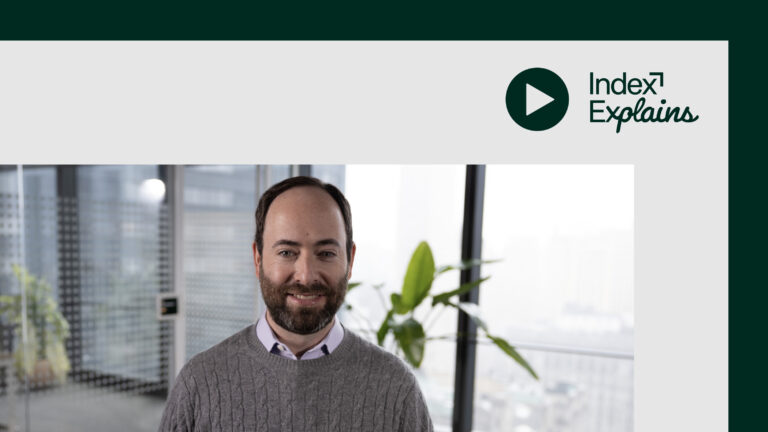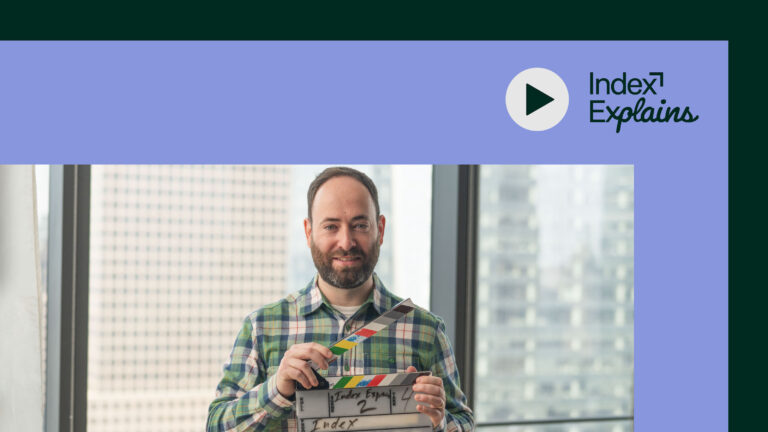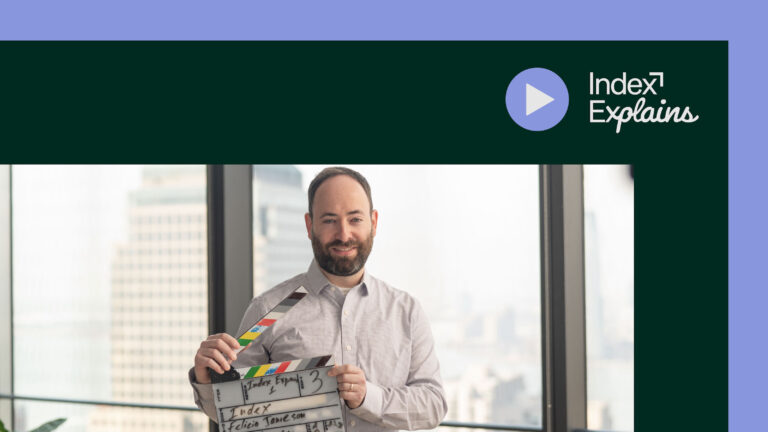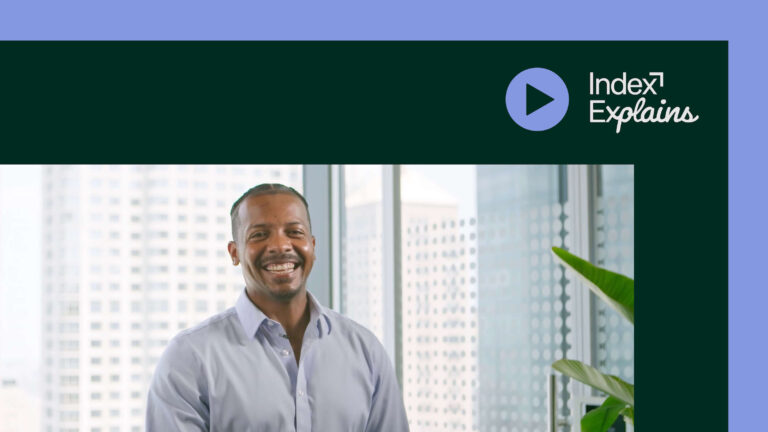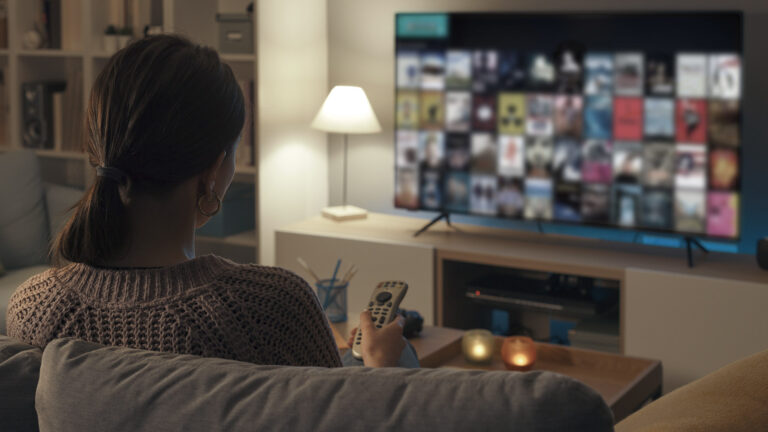Video transcript
Andrew Casale: Amidst the tremendous rise of streaming television, the programmatic ecosystem has been moving quickly to innovate and implement solutions that allow both for scale and an improved ad experience for viewers in the channel. Industry standards, particularly OpenRTB 2.6, provide a framework designed to deliver improved efficiency, performance, and viewer experience.
Hi, I’m Andrew Casale, president and CEO of Index Exchange, and I’m here today with David Dworin, chief product officer at FreeWheel, and we’re going to talk today about how we’re collaborating to build a better ad break in streaming.
David Dworin: Hi, Andrew. Thanks for having me.
AC: Thanks for coming. Historically, programmatic standards have followed growth and we’re seeing that again in streaming TV advertising with the OpenRTB 2.6 standard following the rapid rise in this channel. Now, fortunately, the standards have arrived and FreeWheel is amongst the earliest adopters. So, to kick off, what is OpenRTB 2.6 to you?
DD: If I had to summarize the big problem we’re trying to solve, it’s that existing programmatic standards weren’t built for streaming. They were built for display where you’re optimizing in space instead of time. You’re picking a bunch of different ads that appear on a page or in an app. And so, each bid request represents one sort of box on the page.
But streaming is different. In streaming, you’ve got a pod or multiple pods that we’re decisioning at the same time. And so, when that happens, we have to hack the old standard. We take the one decision that we’re making over the course of the entire pod, you know, 30 minutes, an hour, a movie, whatever it is, and we’ll send it out to all of the different DSPs and SSPs that we work with, and into header bidders that might then send it out into other places.
And what ends up happening is we’ll take, let’s say, a two-minute ad pod and we’ll divide that up and it could be four 30-second ads, or two 30-second ads and four 15-second ads. But the way that the current specs are written, or the old specs were written, we had to take every impression opportunity and make it a separate bid request, which means against that single decision we’re making, we’re sending out dozens of bid requests that then get promulgated throughout the industry and become hundreds of bid requests as they hit the different buyers, the different demand-side platforms.
One of the things that we’re most excited about in 2.6 is that it radically shrinks the number of bid requests that we have to send out, where we can send out a single request that communicates the break information to the different programmatic ecosystem partners and they’re able to deliver a full buffet of ads to us that we can then decision against for a publisher. Rather than having to go and piece together all of these individual bid responses, we’ve got a list that’s coming back from everybody.
AC: So, 2.6 is the end of the hack of programmatic for streaming, and the beginning of the new era?
DD: Beginning of the new thing, right? We’re going to get into what—I mean, I’m sure somebody is going to figure out a way to hack the new thing, they always do, or whatever the next thing that grows is. But at least for now, it solves one of the major problems, especially, but a lot of other ones in the current programmatic implementations that we have.
AC: Awesome. So staying on OpenRTB 2.6, maybe just to kind of break it down—you’ve already touched on this a little bit—but what are some of the obvious benefits of making this change and maybe some of the less obvious benefits as well? Why should everybody from the supply side all the way to DSPs really adopt this standard?
DD: I can throw out a couple of the benefits. I think the obvious one, and the problem I just mentioned, is the hundreds of bid requests that you need to send out. We can consolidate those into a single request, or a single request per exchange, or whatever filters through—but an order of magnitude reduction in the amount of traffic that we need.
From an efficiency perspective, it makes things a lot better. From a sustainability perspective, it makes things a lot better. So just sort of cleaning things up right there, easy sort of quick win out of it.
Another one is right now, if you think about a DSP, it’s responding to all of those individual bid requests as if their individual bid requests a lot of the time. So, it doesn’t know how to deliver a package of ads into the stream, and so it can’t build its own decisioning algorithms against that. What 2.6 lets all of the different parties in the transaction do is start to think of, how do I deliver a playlist here? Or how do I deliver multiple responses?
That’s going to have a benefit for buyers because they’re going to have their ads show up more of the places that they want them to. It’s going to be beneficial for publishers because they get more benefit from having all of that demand diversity.
And it’s going to be beneficial for viewers because I think anyone who’s ever watched streaming TV has had that experience of, why do I keep seeing the same ad? So, the more ads you see, the better—do you have streaming TV in Canada?
AC: Oh, yeah, we definitely do. There aren’t a lot of unique ads, though, so we’re definitely suffering from this problem a lot.
DD: Yeah, so, right, it gets you those unique ads. Everybody has their story of the ad they see all the time. It’s nice to get a little bit more in there.
AC: So, super efficient and ultimately better for the viewer.
DD: Better for the viewer experience, better for the buyer that’s trying to deliver their campaign, better for the publisher that’s trying to make money off of their media. Everybody sort of wins with it.
AC: So, maybe just holding on to the better ad experience for the consumer a little bit, what is the optimal end state that we’re all driving toward? Like what is your utopia of that better ad break for the end consumer?
DD: Yeah, so this is a fun one for me. I’ve been at FreeWheel for a while and in earlier jobs, we’ve done a ton of research on this. We’ve done research on the viewer experience in terms of, you know, how does it cause user drop off—like when do people get so frustrated with the ads they just quit? We’ve done viewer experience where we’ve put people in our lab and we’ve had them watch different ad breaks to see the experience. So, we’ve done a lot of work on this.
One of the interesting things is there is this inherent tension in streaming TV advertising between the publisher that wants to make money to pay for the high value content that they have professionally produced, the buyer that wants to transmit ads into the viewer’s brain, and the viewer that wants to have the content at sort of the lowest possible price.
So, there’s this inherent tension there in the viewer experience between they don’t really want to see any ads, but they understand that ads are the pathway to getting more content at a better price for them. And so, the optimal experience, the optimal pod, is going to deliver the most yield for the publisher. But it’s also going to have diversity for the viewer.
One of the things that we’ve found is viewers don’t like seeing the same ad in a row. That’s sort of the obvious one. But even across pods, one of the biggest challenges to the viewer and the things that cause drop-off, is seeing the same ad in the same position in every pod—it’s just super frustrating.
So being able to get a broad range of ads to come in, sort of a buffet, and being able to mix them up and shuffle them around in the pod actually creates a better viewer experience because it doesn’t become so repetitive. That’s better for advertisers, obviously, they don’t want to be the person annoying the viewer and causing them turning things off.
We just had some research that we released that shows that the optimal pod length is probably shorter and it has a variety of creative durations in it. So, it’s not all 30s. It’s definitely not all 15s and it’s very much not all sixes. So being able to mix it up a little bit, that improves things as well.
And I think for the advertiser, being able to get their message out and have some diversity in those message—because the other thing, the viewer doesn’t want to see the same ad all the time, but one person’s ad repetition is another person’s recall. And so being able to balance those things and manage your frequency so it’s not delivering all in the same stream, but it’s delivering over the course of the lifetime of your campaign.
So, the optimal pod balances those things and has this choreography to it where it’s balancing different lengths and different diversity. It’s managing the length of the pod in a yield-optimal way, so that it’s not too crowded and the viewer doesn’t get bored. And it’s managing the diversity within it so that there’s a number of different stories that are being told across the stream.
AC: So the perfect pod is not three minutes of six-second ads?
DD: It’s not—we ran this test, it surprised me—I thought that just, you know, berating someone with 30 sixes, that was the future. Did not work out that way. No, didn’t happen.
AC: That’s really helpful, though. I often think of optimizing the pod as just avoiding the repetitive ad one after the other. But it’s a really good point. Even repetitive ads across pods creates that same consumer challenge.
DD: We saw this huge drop off, where like you just see it in the same spot. And so, we have something called pod shuffling. You mix it up a little bit. I don’t mind it as much—the viewer doesn’t mind as much. Obviously, there is tension between I want to have a sponsorship and maybe like a big live event, that’s sort of different than I’m watching an episode of TV over and over again and the same ad starts every pod.
AC: Let’s look ahead, past the pod, past 2.6. As you think about the channels, as you think about streaming, as you think about programmatic, what’s in front, what’s the next challenge for the ecosystem to jointly tackle beyond the pod and some of the stuff we’ve been talking about here?
DD: I think the huge thing that we’re excited about for next year, there’s two of them. One of them is opening new devices and new channels up to programmatic. We had a release towards the end of last year where we’re doing real-time programmatic decisioning into linear TV set-top boxes.
About half of linear TV viewing—or half of on-the-TV viewing—according to Nielsen, is still happening on cable or broadcast. So, opening that up presents a huge amount of inventory, and we’ve started to do that for programmers on their traditional set-top-box inventory, and we expect to do more of that in the future.
And the more we can do that, the more it makes all TV viewing look like streaming, which means advertisers can be buying programmatically across anything. So new inventory is one of the big ones we’re looking at.
The other one’s live. If you think about a live event, it’s a huge opportunity. The most watched programs are still NFL football, there’s still sports, still big tentpoles.
That presents different challenges for the industry. It used to be, and still somewhat is, that if you get millions—and it’s literally millions—of simultaneous bid requests, some of which look like they’re coming from a server because they’re coming from a stream stitcher, it’s just really easy to discard it as fraud.
That is unfortunately like literally the most valuable event because it’s the only opportunity to get massive simultaneous reach, usually in a really highly engaged audience that’s very invested in the programming and not willing to turn it off, especially if it’s a good game.
So, you have this tension between the thing that sort of is hardest to make work and the thing that is best for advertisers. And publishers don’t want to get it wrong because you don’t get those million opportunities back in the same way you do in video on demand (VOD), where it’s sort of over time.
I think getting live to work and solving the problems of scale, and the problems of pacing, and making that work across the programmatic supply chain—it opens up new advertisers to that content that have never been able to access it before and new opportunities for publishers as well, to deliver more ad diversity and better targeting and things they haven’t been doing as well.
So, taking the promise of programmatic and getting it into new environments and getting it into live, that’s what we’re focused on next.
AC: That’s super exciting. Programmatic, linear, and live? It’s amazing.
DD: That’s the big stuff, right? Then we sort of fill out that whole pie chart of where people are watching, and any inventory and the best stuff can be executed programmatically.
AC: Well, David, thank you so much for joining us today, and for our partnership, and for collaborating together throughout industry standards to make a better ad break.
DD: Awesome. Well, thanks for having me. It’s been great—I enjoyed the discussion.
Learn more about the future of programmatic in streaming TV.





